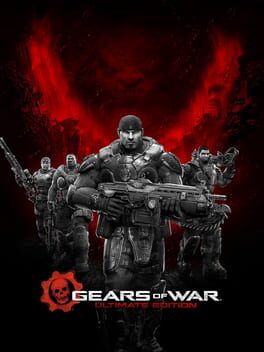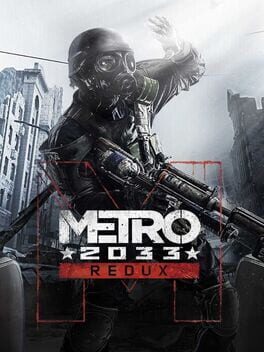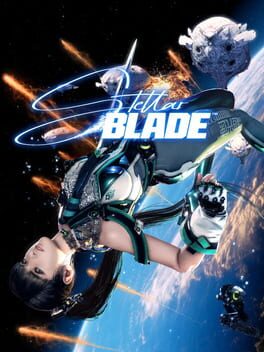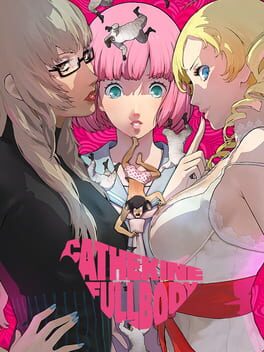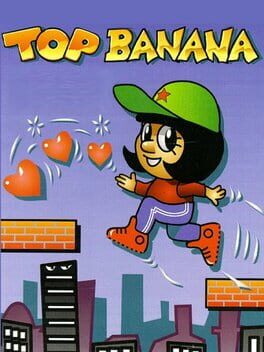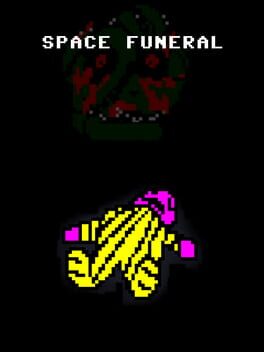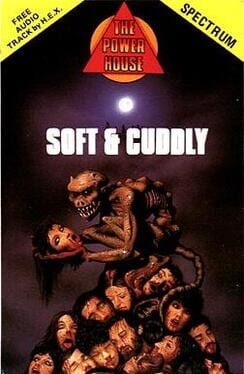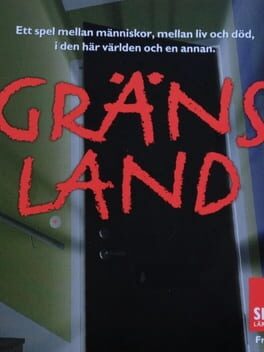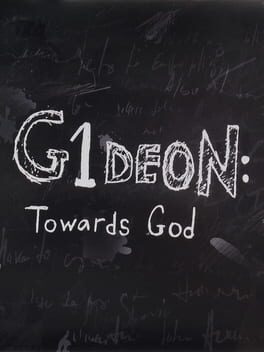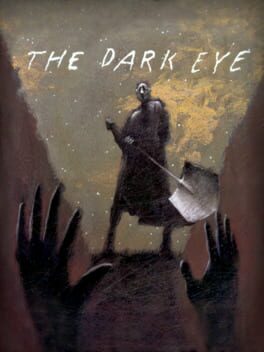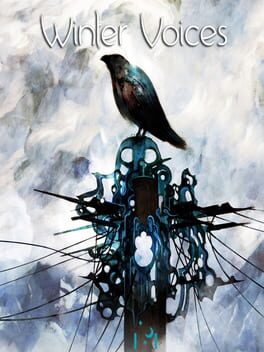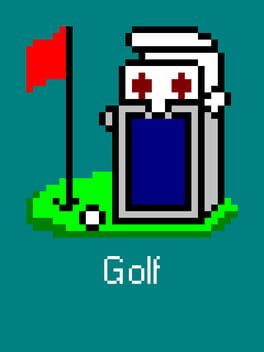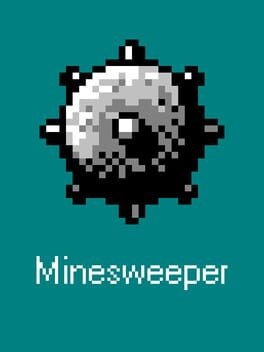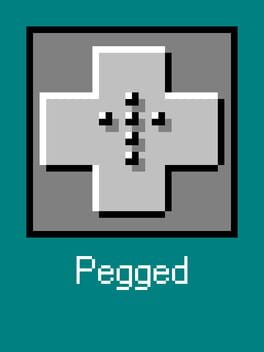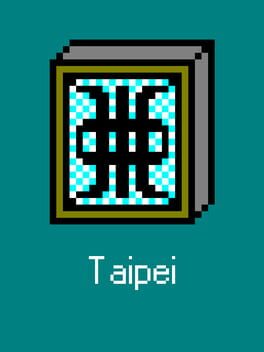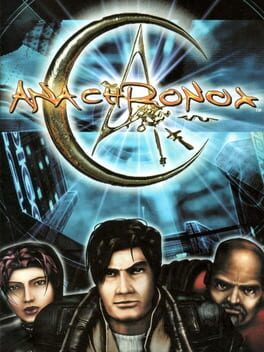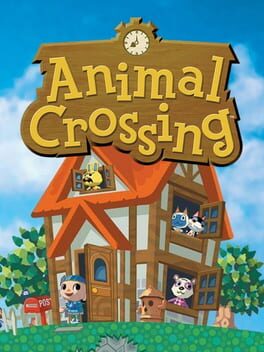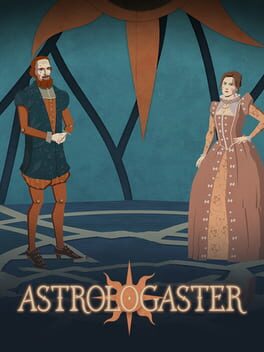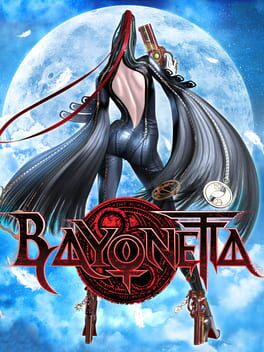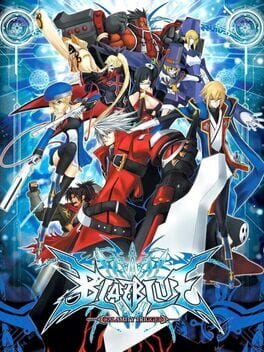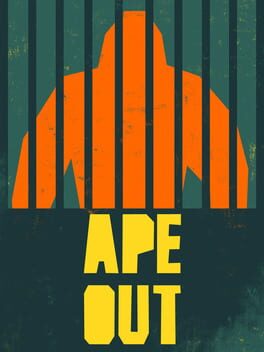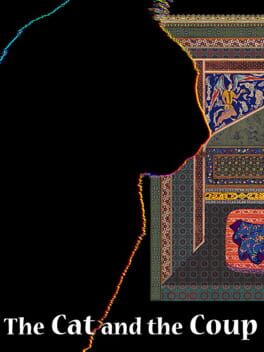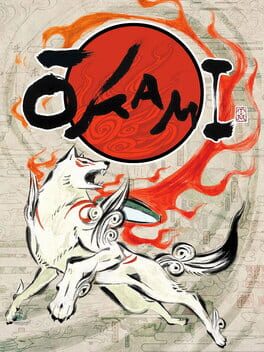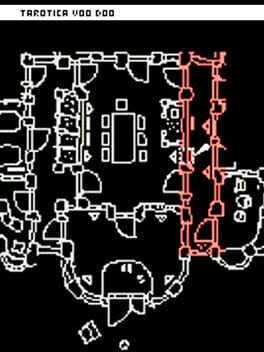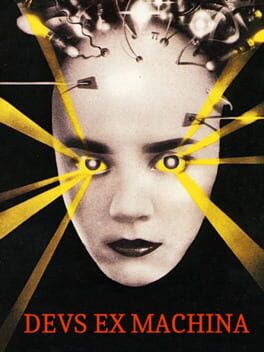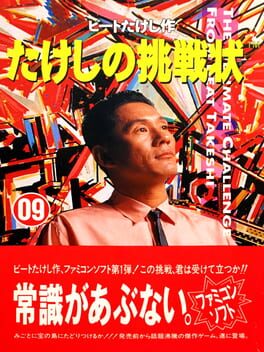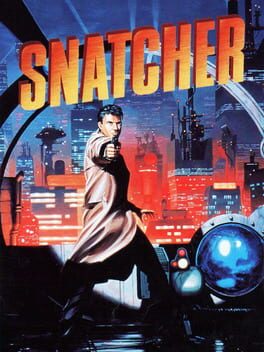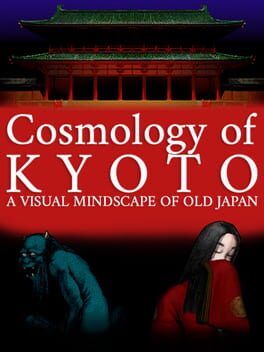sher_holder
140 reviews liked by sher_holder
Pikmin
2001
The secret behind Pikmin’s success was not that it somehow outclassed classic real-time strategy franchises, but rather that it was never competing with them to begin with. According to Shigeru Miyamoto, he came up with the idea for Pikmin one day when he observed a group of ants carrying leaves together into their nest. Miyamoto then imagined a game focused on cooperation rather than competition; he asked, “Why can’t everyone just move together in the same direction, carrying things as a team?” Nintendo EAD’s design philosophy went along with this line of reasoning, melding design mechanics from different genres to create an entirely new yet familiar experience. As a result, instead of competing against other players in Pikmin akin to classic RTS games, Pikmin forces players to explore and compete with the very environment itself by introducing puzzle-exploration and survival mechanics. It made sense in the end; after all, real-time strategy is concerned with minimizing time spent to get a competitive edge over opponents, and what better way to translate this than to force players to master their understanding over the terrain itself, managing and optimizing the one resource which governs them all?
Perhaps Nintendo’s greatest challenge was figuring out how to translate a genre considered by many to be niche and technical to an intuitive yet layered game, and even more so, translating classic actions from a mouse and keyboard allowing for such complexity to a suite of simplified controls using a gamepad. Coming from the other side as someone who played Starcraft as a kid and didn’t get into Pikmin until recently however, I’m surprised at how well EAD’s tackled this endeavor. Classic RTS games focus upon base-building and resource gathering through the micromanagement of units. Pikmin’s take upon this is to introduce a dichotomy between the player character Captain Olimar, who is incapable of doing anything by himself but can issue commands to the units only he can create by plucking out of the soil, and the Pikmin, who are essentially brainless but represent the units that must do everything. The player as Olimar must be present to figure out exactly how to best traverse and exploit the environment around him (replacing the base-building with management/prioritization puzzles) while the Pikmin provide bodies to construct, move, and attack the world around them. However, the Pikmin’s AI is fairly limited and as a result, Pikmin will sit around helplessly once they finish their actions and often get distracted by nearby objects while moving around, which is where the micromanagement kicks in. Therefore, the player has to decide how to best build up their supply of Pikmin to allocate tasks to surmount bottlenecks while exploring and opening the world, all while working against the limited thirty-day timer throughout the game’s five areas.
A part of me expected to really struggle with the gamepad while playing Pikmin, but the available actions on offer allow for a surprising degree of control despite the simplification. For instance, consider Olimar’s whistle; as a substitute for dragging and clicking to select units on PC, the whistle on the GameCube lets Olimar quickly rally groups of clustered units. Holding down B for longer allows the player to increase the size of the whistle’s AOE, which allows the player to better control and target how many Pikmin to rally in any cluster (hence, the analog of clicking and dragging to select boxes of units on mouse and keyboard). The Swarm command is another interesting translation. The obvious use is to allow Olimar to quickly move nearby Pikmin by directing them with the C-stick versus needing to aim and throw them by positioning and rotating Olimar himself. However, because it can be used to shift the position of Pikmin with respect to Olimar, it can also be used to swap the Pikmin on-deck for throwing (since Olimar will always throw the Pikmin closest to him) without needing to dismiss and re-rally separated Pikmin colors, and most importantly, it allows you to directly control the group of Pikmin following Olimar while moving Olimar himself. This second application allows the player to kite the Pikmin around telegraphed enemy attacks, and properly funnel them so the Pikmin aren’t getting as easily stuck behind walls or falling off ledges/bridges into hazards. That said, noticeable control limitations do exist. Olimar cannot pivot to move the reticle without changing his position with respect to the Pikmin around him, which can make aiming in place annoying if the Pikmin types you need to throw aren’t close enough to be moved next to Olimar with Swarm. Additionally, there is no way for Olimar to simultaneously and directly control multiple separated groups of Pikmin, which does make allocating tasks a bit slower. However, given that the tasks themselves usually don’t necessitate more than one Pikmin type at a time, this limitation is understandable, especially since the sequels would tackle this challenge with more expansive controls and multiple playable characters on the field.
Pikmin’s base model as a result is a fantastic translation of an abstract design philosophy, but I can’t help but wonder if the original could have been pushed further. Don’t misunderstand me: I absolutely take pride in mastering a game by learning all about its inner workings and pushing its mechanics to the limits simply by following a few intuitive genre principles. As such, I wish that the game was a bit harder in order to really force me to squeeze every bit of time from the game’s solid premise. For example, combat is often optional in Pikmin given how many full-grown Bulborbs are found sleeping, but given that most enemies don’t respawn within the next day after killing them and I can bring their carcasses back to base to more than replenish my Pikmin supply, combat is almost always in my favor, especially since certain enemies will spawn more mobs if they aren’t defeated. If circumstances existed where it would be unfavorable to engage (such as losing a significant number of Pikmin every time, or having so little time left that engaging would waste time), then I feel that this would add an additional layer of decision-making of deciding when to sneak past sleeping Bulborbs rather than just wiping out as many foes as I could as soon as possible. In a similar sense, I felt that certain design elements such as the Candypop Buds for switching Pikmin colors were a bit underutilized; outside of one environmental puzzle, I never had to use the Candypop Buds, mainly because I had so many remaining Pikmin and time to never justify their usage. I’ll concede here that Pikmin’s one-day Challenge Mode does at least provide a score attack sandbox where I’m forced to take my Pikmin stock and remaining time into higher consideration, but it’s missing the connectivity of the main story mode where my earlier actions would greatly affect how I planned later days in a run, particularly in making judgement calls on which days to spend at each site and which days I dedicate towards building up my Pikmin numbers versus hauling in ship parts. Regardless, I found myself completing the main game with all parts in just twenty days on my first run with minimal resets, and I’d love to try a harder difficulty mode with a stricter time limit and tougher Pikmin margins to really force me to better conserve my working force and dedicate more time to restocking my supply.
Gripes aside, I’m glad that my friends finally convinced me to try out Pikmin, not just to better appreciate RTS games as a whole but to also gain an appreciation of how different genre mechanics can work in tandem to intuitively convey concepts without spelling everything out to the player. It’s classic Nintendo at their core, and while I had my reservations coming in as a fan of older RTS franchises, they’ve managed to convince me once again that the best hook is not simply offering something that’s visibly better, but rather offering something that’s visibly different. I still think that there’s improvement to be had, but given how much I’ve enjoyed the first game, I can’t wait to see what they have to offer from iterating upon their memorable beginnings.
Perhaps Nintendo’s greatest challenge was figuring out how to translate a genre considered by many to be niche and technical to an intuitive yet layered game, and even more so, translating classic actions from a mouse and keyboard allowing for such complexity to a suite of simplified controls using a gamepad. Coming from the other side as someone who played Starcraft as a kid and didn’t get into Pikmin until recently however, I’m surprised at how well EAD’s tackled this endeavor. Classic RTS games focus upon base-building and resource gathering through the micromanagement of units. Pikmin’s take upon this is to introduce a dichotomy between the player character Captain Olimar, who is incapable of doing anything by himself but can issue commands to the units only he can create by plucking out of the soil, and the Pikmin, who are essentially brainless but represent the units that must do everything. The player as Olimar must be present to figure out exactly how to best traverse and exploit the environment around him (replacing the base-building with management/prioritization puzzles) while the Pikmin provide bodies to construct, move, and attack the world around them. However, the Pikmin’s AI is fairly limited and as a result, Pikmin will sit around helplessly once they finish their actions and often get distracted by nearby objects while moving around, which is where the micromanagement kicks in. Therefore, the player has to decide how to best build up their supply of Pikmin to allocate tasks to surmount bottlenecks while exploring and opening the world, all while working against the limited thirty-day timer throughout the game’s five areas.
A part of me expected to really struggle with the gamepad while playing Pikmin, but the available actions on offer allow for a surprising degree of control despite the simplification. For instance, consider Olimar’s whistle; as a substitute for dragging and clicking to select units on PC, the whistle on the GameCube lets Olimar quickly rally groups of clustered units. Holding down B for longer allows the player to increase the size of the whistle’s AOE, which allows the player to better control and target how many Pikmin to rally in any cluster (hence, the analog of clicking and dragging to select boxes of units on mouse and keyboard). The Swarm command is another interesting translation. The obvious use is to allow Olimar to quickly move nearby Pikmin by directing them with the C-stick versus needing to aim and throw them by positioning and rotating Olimar himself. However, because it can be used to shift the position of Pikmin with respect to Olimar, it can also be used to swap the Pikmin on-deck for throwing (since Olimar will always throw the Pikmin closest to him) without needing to dismiss and re-rally separated Pikmin colors, and most importantly, it allows you to directly control the group of Pikmin following Olimar while moving Olimar himself. This second application allows the player to kite the Pikmin around telegraphed enemy attacks, and properly funnel them so the Pikmin aren’t getting as easily stuck behind walls or falling off ledges/bridges into hazards. That said, noticeable control limitations do exist. Olimar cannot pivot to move the reticle without changing his position with respect to the Pikmin around him, which can make aiming in place annoying if the Pikmin types you need to throw aren’t close enough to be moved next to Olimar with Swarm. Additionally, there is no way for Olimar to simultaneously and directly control multiple separated groups of Pikmin, which does make allocating tasks a bit slower. However, given that the tasks themselves usually don’t necessitate more than one Pikmin type at a time, this limitation is understandable, especially since the sequels would tackle this challenge with more expansive controls and multiple playable characters on the field.
Pikmin’s base model as a result is a fantastic translation of an abstract design philosophy, but I can’t help but wonder if the original could have been pushed further. Don’t misunderstand me: I absolutely take pride in mastering a game by learning all about its inner workings and pushing its mechanics to the limits simply by following a few intuitive genre principles. As such, I wish that the game was a bit harder in order to really force me to squeeze every bit of time from the game’s solid premise. For example, combat is often optional in Pikmin given how many full-grown Bulborbs are found sleeping, but given that most enemies don’t respawn within the next day after killing them and I can bring their carcasses back to base to more than replenish my Pikmin supply, combat is almost always in my favor, especially since certain enemies will spawn more mobs if they aren’t defeated. If circumstances existed where it would be unfavorable to engage (such as losing a significant number of Pikmin every time, or having so little time left that engaging would waste time), then I feel that this would add an additional layer of decision-making of deciding when to sneak past sleeping Bulborbs rather than just wiping out as many foes as I could as soon as possible. In a similar sense, I felt that certain design elements such as the Candypop Buds for switching Pikmin colors were a bit underutilized; outside of one environmental puzzle, I never had to use the Candypop Buds, mainly because I had so many remaining Pikmin and time to never justify their usage. I’ll concede here that Pikmin’s one-day Challenge Mode does at least provide a score attack sandbox where I’m forced to take my Pikmin stock and remaining time into higher consideration, but it’s missing the connectivity of the main story mode where my earlier actions would greatly affect how I planned later days in a run, particularly in making judgement calls on which days to spend at each site and which days I dedicate towards building up my Pikmin numbers versus hauling in ship parts. Regardless, I found myself completing the main game with all parts in just twenty days on my first run with minimal resets, and I’d love to try a harder difficulty mode with a stricter time limit and tougher Pikmin margins to really force me to better conserve my working force and dedicate more time to restocking my supply.
Gripes aside, I’m glad that my friends finally convinced me to try out Pikmin, not just to better appreciate RTS games as a whole but to also gain an appreciation of how different genre mechanics can work in tandem to intuitively convey concepts without spelling everything out to the player. It’s classic Nintendo at their core, and while I had my reservations coming in as a fan of older RTS franchises, they’ve managed to convince me once again that the best hook is not simply offering something that’s visibly better, but rather offering something that’s visibly different. I still think that there’s improvement to be had, but given how much I’ve enjoyed the first game, I can’t wait to see what they have to offer from iterating upon their memorable beginnings.
extremely surreal to see that a prevalent consensus on this is that it's an OBVIOUS uberbleak nihilist exercise in cynical ultraviolence when I feel like it's Very Clearly shooting for (but emphatically not always flawlessly succeeding at) humanist themes exploring mercy, kinship, and absolution: The last spoken line/thesis of the game is literally "I don't know if I can ever forgive you, but I'd like to try" which basically mirrors the bubbly final sentiment in Steven Universe of all things... like come on people the game clearly has a lot of faith in human compassion and optimism that we can be (and are) better than our worst impulses. We can (and should!) totally debate the efficacy of the way the game communicates these ideas. I think there are plenty of areas to criticize or outright condemn in terms of execution; the pieces written about the games fraught zionist inspirations and the discomfiting misogynoir on display in regards to a specific moment are especially vital reads--but framing this story's outlook as intentionally nihilist, player-blaming pain porn about the inescapable cycle of violence is just.. totally disingenuous to what it's clearly trying to do, imo. A story about empathy without a soft and tender pastel veneer does not render it ineffective or worthless. I would probably argue that the game's refusal to over-sentimentalize the repugnance of its deuteragonists' actions (or make their realities easily accessible/justifiable) lends more integrity to the challenge of conveying the inherent worth and potential for change within them... I feel like the game makes it extra clear that Abby and Ellie are not universalizing prescriptive ciphers for the human condition / our inescapable URGE 4 VENGEANCE and are instead very specific / detailed character studies of damaged people whose emotional processing is expressed through borderline surrealist New French Extremity interactive dream logic in a world that also presents a variety of individuals with approaches and outlooks that are direct foils to these self-destructive coping strategies!!!
lots and lots of thoughts about this game, might revisit and explore further at some point
(also feel the need to say that Naughty Dog's crunch culture is a blight on the industry and this game could have been just as affecting as a more contained and less needlessly sprawling experience)
lots and lots of thoughts about this game, might revisit and explore further at some point
(also feel the need to say that Naughty Dog's crunch culture is a blight on the industry and this game could have been just as affecting as a more contained and less needlessly sprawling experience)
Indika
2024
I can't think of the last time I played a game where I mulled over its themes like this one. I do this all the time for great movies (I did this for The Zone of Interest a couple of months ago), but I don't think I've seen a story come out of a game that fully utilized its medium and was so artistically unique, quite like this one. It throws a LOT at the wall, and while not all of it sticks gameplay-wise, I still recommend people try this out. It's short (almost too short), cheap, and it'll gnaw at your brain hours after beating it.
Don't mistake me. This is a HIGH 7, and don't be surprised if it's bumped up by the end of the year, as I can only see myself appreciating this game more from here.
Don't mistake me. This is a HIGH 7, and don't be surprised if it's bumped up by the end of the year, as I can only see myself appreciating this game more from here.
Has anyone who worked on this game ever actually walked on wooden floors before?? Every time these hulking masses of man meat entered a busted-up domestic structure, the foley of their boots stomping on hardwood completely dominated our entire living room as if it was a "bass boosted" YTP from days gone by. Floors don't sound like war drums, guys!
Anyhow uhhhhhhh pretty good co-op experience! The reload timing is cool, reviving is a nice alternative to respawning, campaign length is nice and tight, and I like way those deep voice enemies say "BOOM". Besides having Bongo Bongo from Ocarina of Time do the footstep sound design, my only real complaint is how frequently you reach a door, have a need to go through that door, and then have to wait for the door to be opened for you. I'm 500 pounds of surly beefcake and jagged metal, just let me through already!
Oh and I constantly forgot that Jack existed, it's like I had no object permanence for that weird little robot
Anyhow uhhhhhhh pretty good co-op experience! The reload timing is cool, reviving is a nice alternative to respawning, campaign length is nice and tight, and I like way those deep voice enemies say "BOOM". Besides having Bongo Bongo from Ocarina of Time do the footstep sound design, my only real complaint is how frequently you reach a door, have a need to go through that door, and then have to wait for the door to be opened for you. I'm 500 pounds of surly beefcake and jagged metal, just let me through already!
Oh and I constantly forgot that Jack existed, it's like I had no object permanence for that weird little robot
Metro 2033 Redux
2014
It is a miracle that I got to finish this brilliant game, and now people can stop bullying me because I haven't played it before.
My rating criteria for this game are games released in 2010 and prior.
I had so many technical difficulties. Even by the standards of that time, this game has so many bugs that softlock you, tons of crashes, and buggy graphics settings. Also, controls got bugged, and I couldn't press the ESC key at all. I had to Alt-Tab every time to pause the game. These technical problems made me finish the game in a week, in about 25 sessions.
However, the story was intriguing, and the horror elements were used in such an amazing way that I got scared of my own shadow multiple times. The library part was made because they hate us players and they want us to have a heart attack. Plus. I liked the funny Ulman jokes.
Oh, the ending was also crazy! Here is footage of me during the ending!
My rating criteria for this game are games released in 2010 and prior.
I had so many technical difficulties. Even by the standards of that time, this game has so many bugs that softlock you, tons of crashes, and buggy graphics settings. Also, controls got bugged, and I couldn't press the ESC key at all. I had to Alt-Tab every time to pause the game. These technical problems made me finish the game in a week, in about 25 sessions.
However, the story was intriguing, and the horror elements were used in such an amazing way that I got scared of my own shadow multiple times. The library part was made because they hate us players and they want us to have a heart attack. Plus. I liked the funny Ulman jokes.
Oh, the ending was also crazy! Here is footage of me during the ending!
JFK Reloaded
2004
JFK Reloaded
2004
Games I Like That Everybody Else Dislikes
So unabashedly, ludicrously (and arguably accidentally) over-the-top in its offensiveness that it's impossible not to find it at least a little remarkable. I mean come on, the thing was created on the same engine as Carmageddon and released on the 41st anniversary of the actual assassination after several months of extensive research to make this as accurate as possible - by a team who had no idea the general public would find it "sickening", "despicable", and "[in] bad taste" (even after adding in enhanced blood splatter and ragdoll options). Games like that don't come around often, even if the end result is little more than a meager physics simulator in actuality. I admire not only the gall but the seemingly impossible ignorance it must have taken to make and then release this the way it did. Plus okay it's kind of hilarious making the car hook into a building at high speed and seeing everybody just launch tf out like something right out of Goat Simulator.
So unabashedly, ludicrously (and arguably accidentally) over-the-top in its offensiveness that it's impossible not to find it at least a little remarkable. I mean come on, the thing was created on the same engine as Carmageddon and released on the 41st anniversary of the actual assassination after several months of extensive research to make this as accurate as possible - by a team who had no idea the general public would find it "sickening", "despicable", and "[in] bad taste" (even after adding in enhanced blood splatter and ragdoll options). Games like that don't come around often, even if the end result is little more than a meager physics simulator in actuality. I admire not only the gall but the seemingly impossible ignorance it must have taken to make and then release this the way it did. Plus okay it's kind of hilarious making the car hook into a building at high speed and seeing everybody just launch tf out like something right out of Goat Simulator.
Stellar Blade
2024
The prevailing mood of Disco Elysium is so melancholy it is easy to forget how funny it can be. I was taken aback in my second playthrough by how often I found myself laughing because I didn't remember it being a particularly funny game—until I realized I was playing a goofier and less self-flagellating character the second time around. Not many games are so responsive to how you play that you can shape the tone of the story.
I don't really have any criticisms of DE in the usual sense, but I was sometimes put off by its cruelty. I mean that most games—even, or dare I say especially, the "edgy" ones—filter out certain parts of being human we would rather not contemplate. DE feels more realistic than other games not just because of its incredible worldbuilding but because it leaves all that stuff in. It is basically a stream-of-consciousness simulator in which you are forced to grapple with every nasty thought that flits through an unpleasant man's neurochemistry. On one hand, this allows you to build a level of empathy for the protagonist that is on par with great works of literature; on the other, it can lead to some ugly places. Pretty much any awful thought you have you are free to indulge—I mean this game lets you be a neoliberal for christ's sake. Bleak af.
For me, personally, the fatphobia that rears its head every so often (I think a character is described as "gelatinous ooze") crosses a line—I believe that this is a thing the protagonist would think, but am I convinced this is a thought the writers of the game needed to share? No, but then again, equally if not more terrible things are voiced in the game all the time, so I guess how that line is drawn is up to each player. Just be warned that, while I do think the game is designed with love for its characters and encourages empathy, it also requires you to confront an unusual amount of hatred and cruelty of a far more realistic kind than you typically see in games, and at times almost seems to take pleasure in rubbing your face in it. If only for the sake of accessibility, I do wonder now and then how much the impact of DE would be diminished if its world were just a tiny bit kinder.
I don't really have any criticisms of DE in the usual sense, but I was sometimes put off by its cruelty. I mean that most games—even, or dare I say especially, the "edgy" ones—filter out certain parts of being human we would rather not contemplate. DE feels more realistic than other games not just because of its incredible worldbuilding but because it leaves all that stuff in. It is basically a stream-of-consciousness simulator in which you are forced to grapple with every nasty thought that flits through an unpleasant man's neurochemistry. On one hand, this allows you to build a level of empathy for the protagonist that is on par with great works of literature; on the other, it can lead to some ugly places. Pretty much any awful thought you have you are free to indulge—I mean this game lets you be a neoliberal for christ's sake. Bleak af.
For me, personally, the fatphobia that rears its head every so often (I think a character is described as "gelatinous ooze") crosses a line—I believe that this is a thing the protagonist would think, but am I convinced this is a thought the writers of the game needed to share? No, but then again, equally if not more terrible things are voiced in the game all the time, so I guess how that line is drawn is up to each player. Just be warned that, while I do think the game is designed with love for its characters and encourages empathy, it also requires you to confront an unusual amount of hatred and cruelty of a far more realistic kind than you typically see in games, and at times almost seems to take pleasure in rubbing your face in it. If only for the sake of accessibility, I do wonder now and then how much the impact of DE would be diminished if its world were just a tiny bit kinder.



